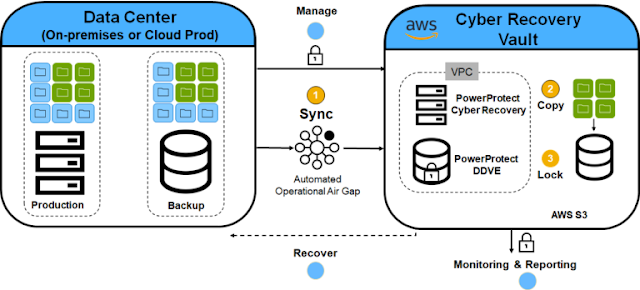Two weeks and a lot of listening have transpired since I stepped into my new role as chief diversity and inclusion officer. I’m both excited and humbled by the responsibility to help make Dell Technologies a place where everyone feels they belong and can be their best. I’ve learned a lot, and I’m ready to get moving.
If the individuals who make up our workforce are to mirror the diversity of our world and our customer base, we must accelerate our progress toward our 2030 goals. I see four key areas of focus moving forward:
Building accountability into how we operate. This starts at the top, which is why our most senior leaders have diversity goals tied to their performance expectations. Accountability at the highest levels ensures we are hiring and promoting at a rate that is on track with building a more representative workforce. For talent we’re bringing in, we continue to evaluate at least one diverse candidate for every role we’re filling – using diverse interview panels to do so. And in our most recent promotion cycle, women globally and underrepresented minorities in the U.S. (Black/African American and Hispanic/Latino) were promoted at rates higher than our current representation – accelerating our pipeline for a leadership team where 40% identify as women and 15% identify as Black/African American or Hispanic/Latino, respectively, by 2030. We always pick the best person for the role when hiring, promoting or transferring team members. Taking the steps to look at a truly diverse field of candidates will continue to get us closer to reflecting the diversity of the world we live in.
And next month, as part of our annual employee engagement survey, our team members will have the opportunity to give feedback on how their direct managers are doing in the area of inclusion – with people managers ultimately receiving an inclusive leadership score. It doesn’t stop with measurement once per year, though. Inclusive behavior will be examined at key points throughout the year – like career conversations and annual performance reviews – with embedded learnings on topics like bias and microaggressions. We’ll launch this learning experience in June.
Using technology to foster an inclusive hybrid workplace. Our sense of belonging starts with the interactions we have with each other at work. Years ago, I would bring interpreters with me to 1:1 meetings so I could connect with colleagues who spoke a different language. We’ve come a long way since then. Today, our platforms can bring more of us together with capabilities like auditory and visual design.
While we’ve made significant improvements on the accessibility front, we have more progress to make. Closed captioning on video conferencing is a way we can all provide a shared experience for team members of all abilities. Here are a few other capabilities in the works:
◉ Next month, our Dell Digital team is releasing a centralized accommodation process for requesting accessibility tools. You won’t have to disclose your abilities to your direct manager. And our Dell Digital team will be able to track accommodation requests to continue innovating accessible solutions.
◉ We’re taking the same approach with teams in our factories. Training platforms that convert sound into images, exoskeletons that support people with lower limb disabilities, and augmented reality solutions for those with hearing loss – all help ensure team members have a consistent experience and opportunity for success.
Delivering on our commitments to address racial injustice and socioeconomic disparity. We set big goals to be transparent and accountable for what we must achieve to drive a more equitable workplace. The commitments we made to address racial injustice and socioeconomic disparity help us accelerate toward these goals. Since our last update, we’ve taken more steps to live up to our inclusive culture and bring in more underrepresented talent. Steps like:
◉ Our hiring from two-year colleges has begun – opening up more career paths and getting us closer to closing the global tech talent shortage. They’ll start on our technology support and sales teams next month.
◉ We exceeded our team member giving goal of more than $1M (with the Dell match) to organizations advocating for racial justice and equity.
◉ We joined Take on Race to provide connected devices and digital literacy to Black and Hispanic children with the greatest needs.
◉ And as of today, we’ve joined the Alliance for Global Inclusion with Intel, Snap Inc., Nasdaq and NTT DATA. Through this partnership, we’ve developed shared diversity and inclusion metrics that will help companies drive progress in leadership representation, inclusive language, inclusive product development, and STEM readiness in underserved communities.
Connecting with each other for deeper belonging. While I’m inspired by the actions we’re taking, I am also sensitive to the reality of the world around us. We’re still seeing hate, discrimination and injustice toward communities of color, women, members of the LGBTQ+ community and to other groups of different backgrounds. There have been several times throughout this past year where I’ve had to hit pause and take a moment… to find the energy to keep going. I know I’m not alone, which is why connecting is so important. For me, that ongoing connection continues in May with our Asians in Action employee resource group (ERG). I am thrilled to help kick off Asian American and Pacific Islander Heritage Month with them – recognizing their achievements and continuing to learn how we can #StopAsianHate. I hope you’ll join me.
In all ways we work and live, let’s come together to better understand each other and the unique challenges we face. Let’s celebrate. Let’s show empathy. And let’s continue innovating and identifying ways we can all be our best.
Source: delltechnologies.com


























